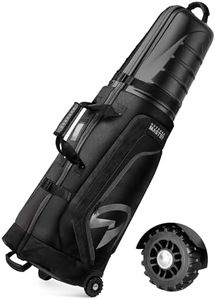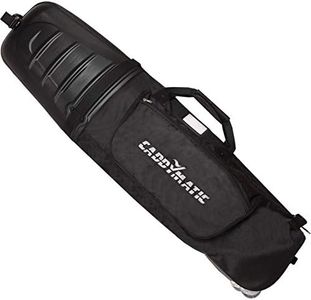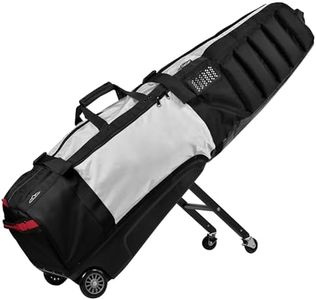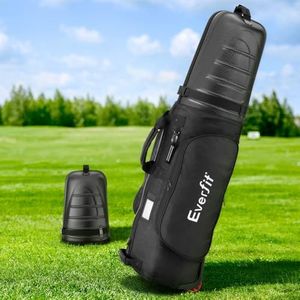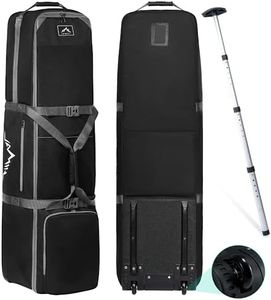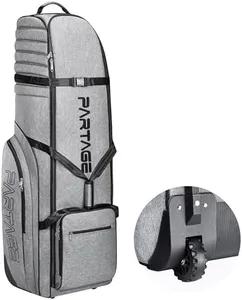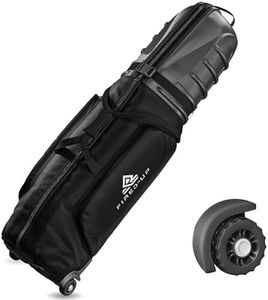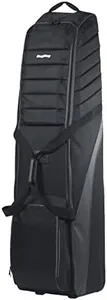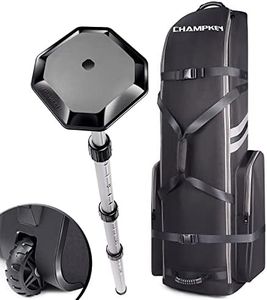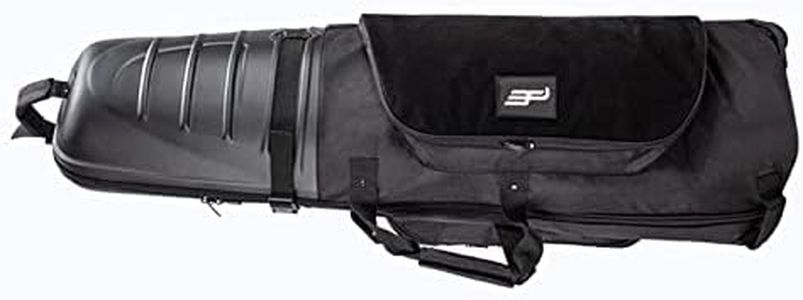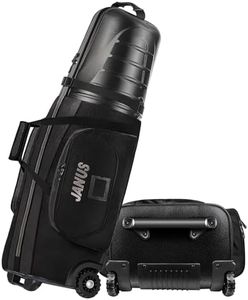We Use CookiesWe use cookies to enhance the security, performance,
functionality and for analytical and promotional activities. By continuing to browse this site you
are agreeing to our privacy policy
10 Best Hard Case Golf Travel Bags
From leading brands and best sellers available on the web.By clicking on a link to a third party's website, log data is shared with that third party.
Buying Guide for the Best Hard Case Golf Travel Bags
Choosing a hard-case golf travel bag can feel overwhelming given the range of features available, but the goal is simple: you want a bag that protects your golf clubs during travel, fits your equipment comfortably, and is convenient to move around. It's best to think about your travel habits and how much ease, protection, and storage you need. By understanding some key specifications, you can find the best fit for your unique needs without feeling lost in technical details.Material and Build QualityMaterial and build quality determine how much protection your clubs will get during transit. Most hard-case travel bags are made from tough plastics like ABS or polycarbonate, which resist impacts and crushing. Higher-end cases use thicker, more rugged shells, while lighter models focus on reducing weight. If you travel frequently or use airlines that are less gentle with baggage, opt for sturdier, heavier-duty materials. For occasional car trips, lighter cases may be sufficient.
Size and Club CompatibilityThe size of the hard-case golf travel bag matters because it must fit your longest clubs, often up to 48 inches. Check product details for maximum club length supported. Some cases are slimmer and intended for standard sets, while others are oversized to allow for extra pockets or larger club sizes. Think about the length of your driver and whether you often carry extra items like shoes or clothing in the case to pick the right size for you.
Wheels and MobilityWheels make it easier to move your hard-case bag through airports and parking lots. The most common options are two wheels (tilted rolling) or four wheels (upright and multi-directional). Two-wheel bags are simpler to pull on rough surfaces, while four-wheel bags glide easily across smooth floors and are more maneuverable in tight spaces. If you anticipate walking long distances or navigating busy airports, consider models with four wheels.
Locking MechanismA locking mechanism protects your clubs from theft and ensures bags don’t open accidentally. Some bags have built-in TSA-approved locks, which airport security can open if necessary. Others offer basic latches or allow you to add a padlock. If you fly often, prioritizing TSA-approved locks will prevent potential headaches during security checks, while occasional travelers can focus more on basic security.
Interior Padding and Securing StrapsInterior padding helps absorb shocks and prevents clubs from shifting inside the case, while securing straps anchor your equipment so it doesn’t move during transport. Some bags offer plush, all-around padding and extra strap options, while others keep it minimal. If you have delicate or expensive clubs, or travel in situations where rough handling is likely, choose a bag with more substantial padding and multiple interior straps.
WeightThe weight of a hard-case golf travel bag affects how easy it is to carry and whether you might face airline luggage weight limits. Heavier cases often provide more protection, but lighter bags are easier to transport and less likely to incur extra baggage fees. Consider whether you’ll be lifting the bag into cars or onto conveyor belts frequently, as a lighter bag could spare you some hassle, but always balance weight with the level of protection you need.
